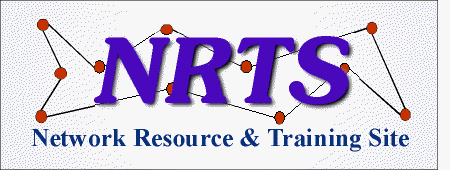|
Research Symposium March 23, 2001 Nashville, Tennessee | |

|

|
|
Above Left: TSU Network Resources and Training Site Logo Above Right: Ms. Traveous Johnson, Dr. Hirendranath Banergee, and Shaleka Eley | |
|
Students and faculty from Elizabeth City State University recently participated in the NASA/TSU Research symposium at Nashville, Tennessee. Mr. Zack Hawkins, Ms. Trevious Johnson, and Dr. Hirenda Banerjee participated in the one day conference held at downtown Sheraton, Nashville on 3-23-01. The ECSU students participated in the seminar and presented an abstract entitled "Identification of a Mouse Orthologue of the CED-6 gene of Caenorhabditis elegans". The seminar gave the students an opportunity to interact with other students and faculty along with learning of NASA's missions for space research in the twenty-first century. The faculty at Tennessee State University and NASA's representative were very impressed with the work presented by the ECSU students and they have decided to set up an Astrobiology center for NASA at ECSU which will be part of a consortium with the other Universities. | |
|
IDENTIFICATION OF A MOUSE ORTHOLOGUE OF THE CED-6 GENE OF CAENORHABDITIS ELEGANS. H. Banerjee, Z. Hawkins, T. Johnson, S. Eley, S. AliKhan and R. Blackmon. Department of Biology, Elizabeth City State University, Elizabeth City, NC 27909 The rapid engulfment of apoptotic cells is a specialized innate immune response used by organisms to remove apoptotic cells. In mammals, several receptors that recognize apoptotic cells have been identified; Previous analysis of the engulfment gene ced-6 in Caenorhabditis elegans(C. elegans) has suggested that CED-6 is an adaptor protein that particpates in signal transduction pathway that mediates the specific reconition and engulfment of apoptotic cells. Here, we describe our isolation and partial characterization of a mouse cDNA which is like an orthologue of C. elegans CED-6. PCR screening of mouse cDNA pool with primers designed from the C. elegans CED6 CNDA sequence resulted in about 300 base pair PCR product which when partially sequenced and compared by BLAST search showed strong homology to mouse apoptosis gene CAS. Thus in this study we report the identification of a novel C. elegans CED6 like ortholouge in mouse which has probable apoptotic like function. | |
|
The mission of the Center of Excellence in Information Systems is to provide an environment conducive to and facilities in support of interdisciplinary research in selected areas of information systems. Dr. Willard Smith serves as principal investigator for the TSU Network Resources and Training Site. | |
|
The TSU NRTS was established to substantially increase the use of the Internet and its resources by faculty and students. The establishment of the NRTS was made possible with a grant from NASA funded through the Minority University - Space Interdisciplinary Network (MU-SPIN) from funding provided by the Minority University Research and Education Program(MUREP). The main object of the program is to transfer computer network technology and promote its use in support of collaborative interdisciplinary, scientific research among faculty and students, and other scientists and to use the Internet to enhance the education on the campuses served by the grant. The major objectives of the program are:
| |
|
muspin.gsfc.nasa.gov/nrts/tsu/tsu_eic.html coe.tsuniv.edu/nrts/nrts_0.html | |
|
| |